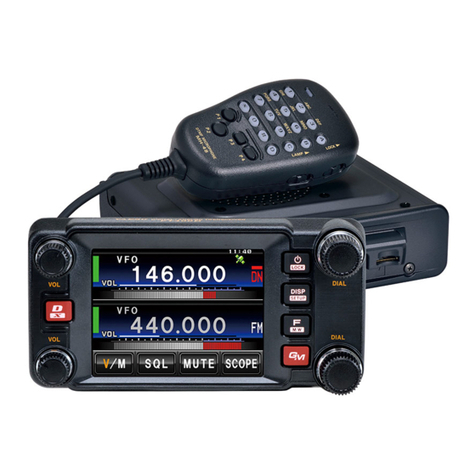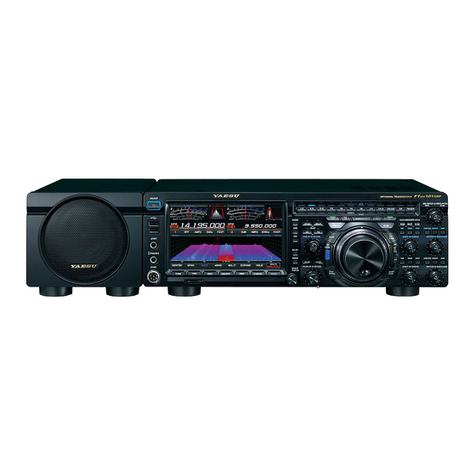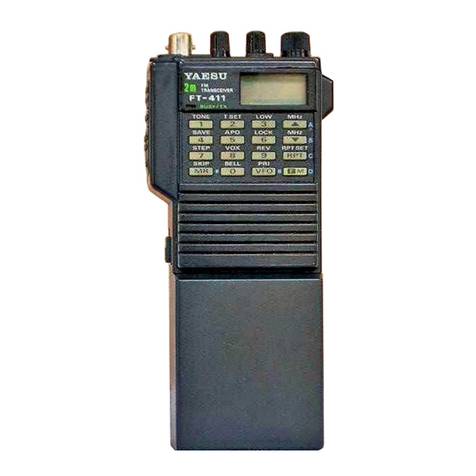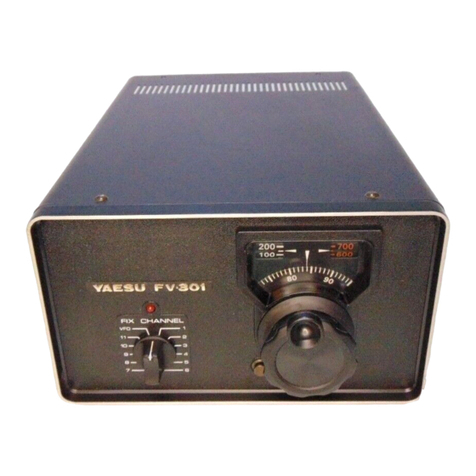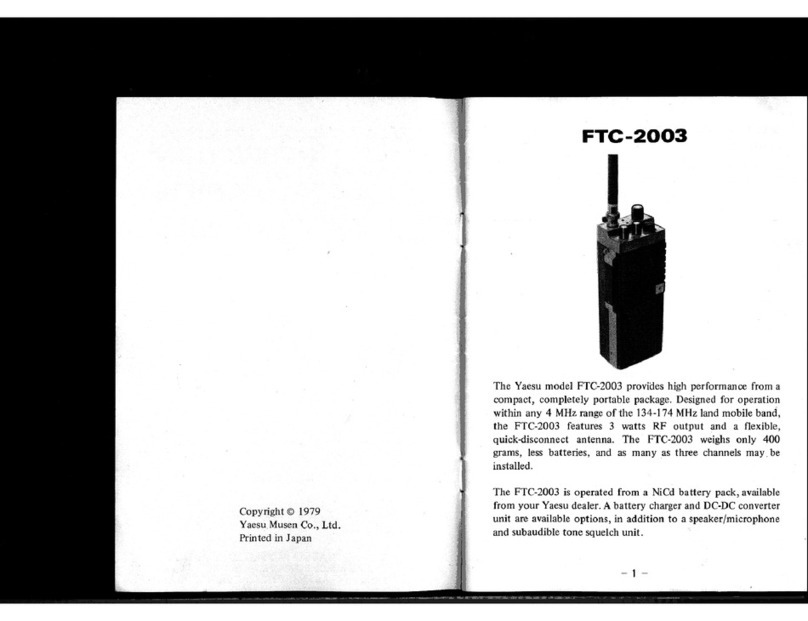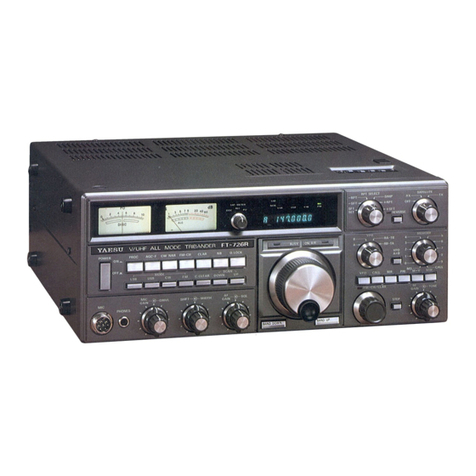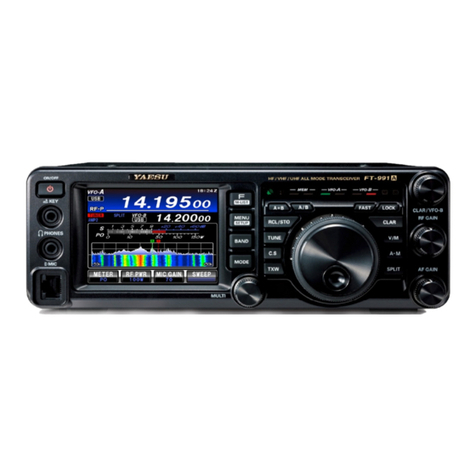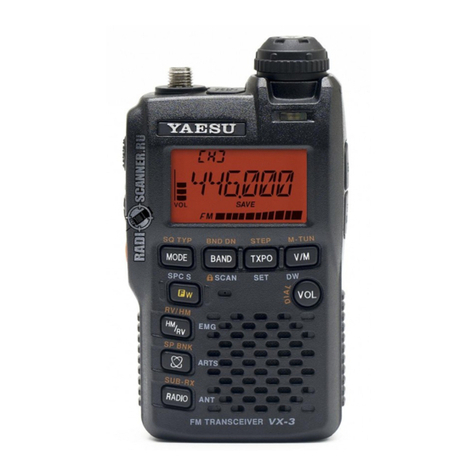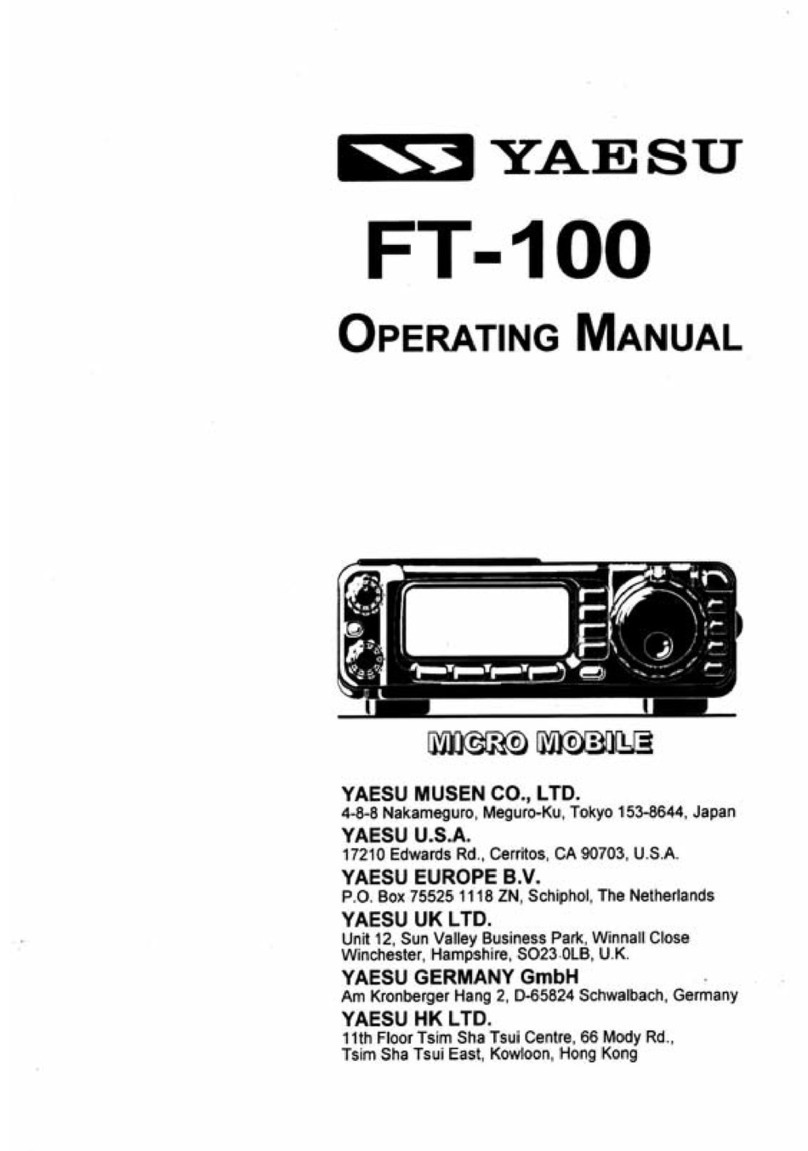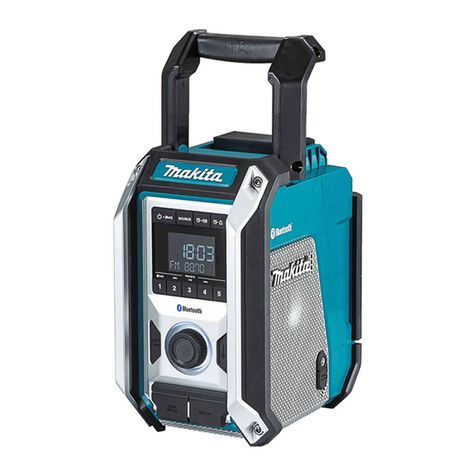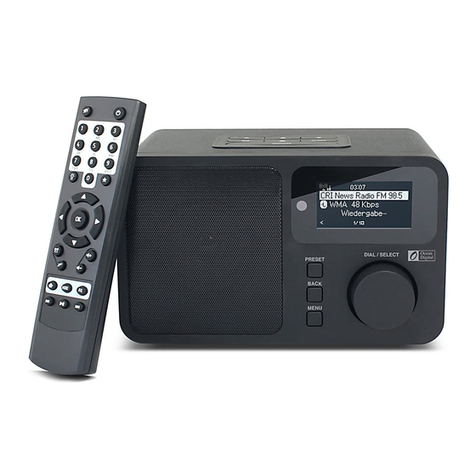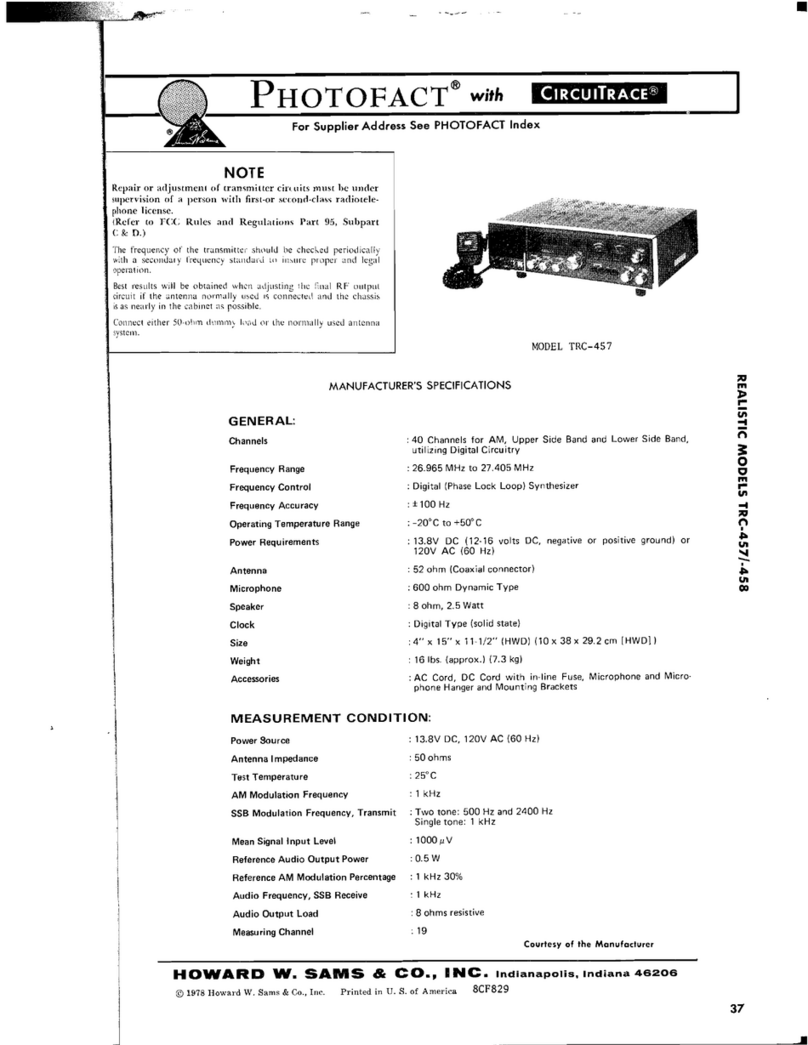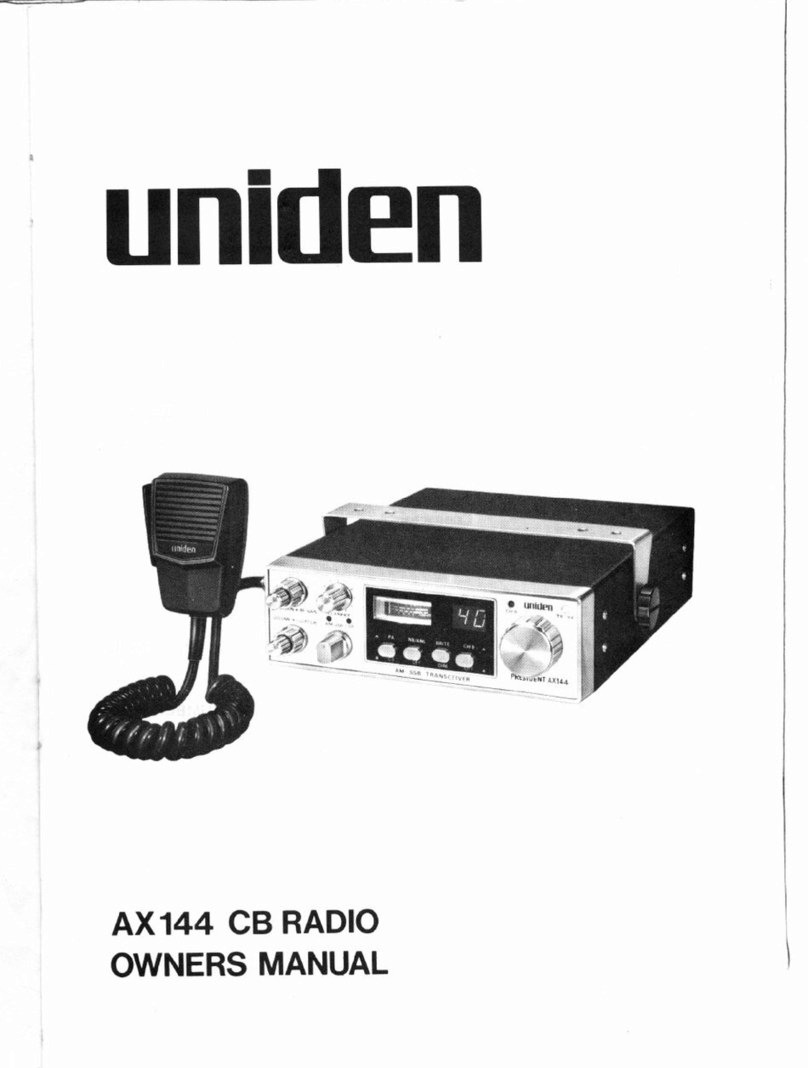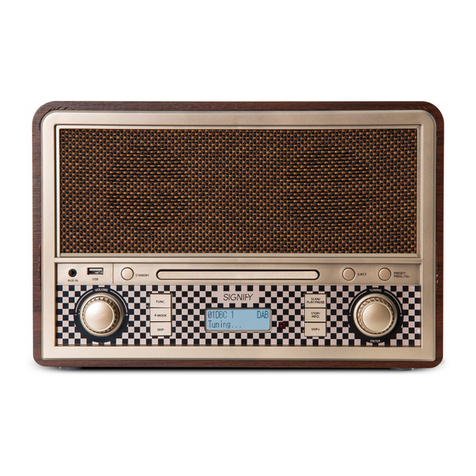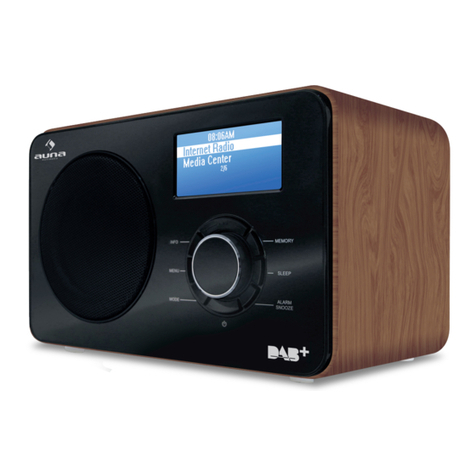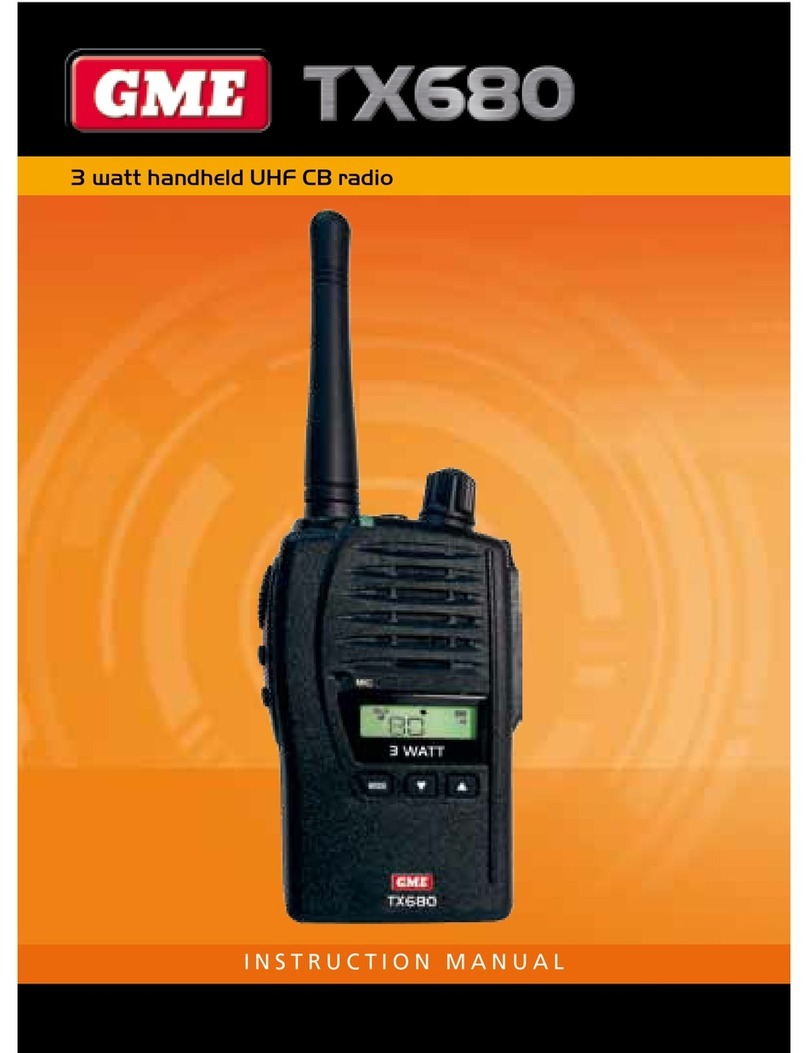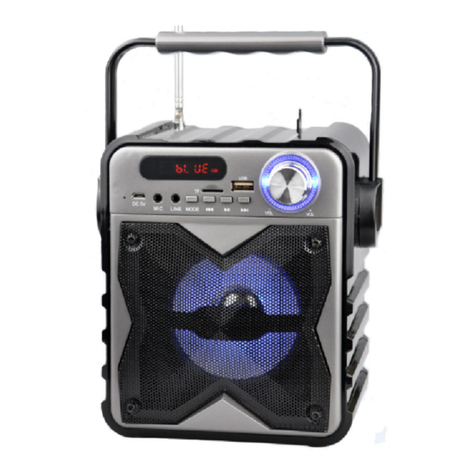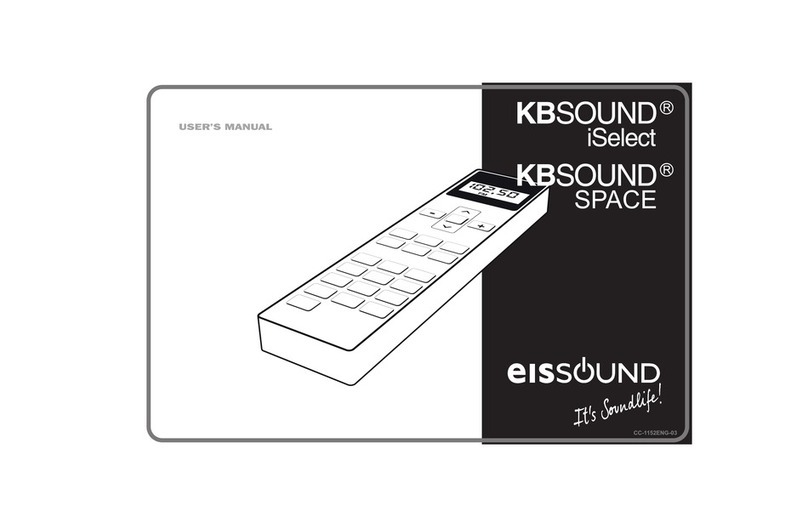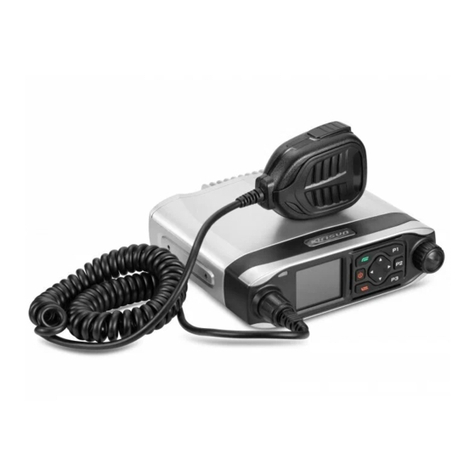
Contents
General Description .......................................1
Specifications ..................................................2
Plug/Connector Pinout Diagrams ................
.4
Accessories & Options ...................................5
Installation ......................................................6
Installing
the
Microphone
and
Front
Panel
......................
6
Power
Connections
...........................................................
8
Grounding
.......................................................................
10
Antenna
Considerations
..................................................
12
RF
Field
Exposure
..........................................................
16
Electromagnetic
Compatibility
.......................................
17
Heat
and
Ventilation
.......................................................
17
Accessory
Interfacing
.....................................................
18
Connection
ofHeadphones
.............................................
23
Adjusting
the
Front
Feet
........................................
~
.......
23
Front
Panel Controls and Switches.............24
Microphone Switches ...................................29
Rear Panel Connectors ................................30
Basic Operation .......................;....................
32
Before
You
Start
.............................................................
32
Operation
Quick
Start
.....................................................
32
Turning
the
Transceiver
On
and
OtT
..............................
32
Amateur
Band
Selection
.................................................
32
Mode
Selection
...............................................................
33
Setting
the
Audio
Volume
Level
....................................
33
Setting
the
Operating
Frequency
....................................
33
Receiver Operation ......................................34
Operating
Function
Selector
([FUNC]
key)
...................
34
Icon
Display
....................................................................
34
Bandwidth
Selection
(SSB/CW/AM
Modes)
.................
35
Frequency
Synthesizer
Steps
..........................................
35
Tuning
Speed
Selection
..................................................
36
General
Coverage
I
MHz
Frequency
Steps
....................
36
General
Coverage
10
MHz
Frequency
Steps
..................
36
Stacked
VFO
System
......................................................
36
Microphone
Programmable
Function
Buttons
................
37
Locking
Front
Panel
Controls
.........................................
38
Setting
the
Display
Brightness
........................................
38
Receiver Accessories ....................................39
Clarifier
(Receiver
Incremental
Tuning)
........................
39
CWSpot
..........................................................................
39
AGC
(Automatic
Gain
Control)
.....................................
39
Noise
Blanker
.................................................................
40
Receiver
Squelch
............................................................
41
IPO
(Intercept
Point
Optimization)
................................
41
ATT
(Front
End
Attenuator)
...........................................
42
IF
SHIFT
.........................................................................
42
CWPitch
.........................................................................
43
CW·Reverse
Mode
..........................................................
43
DSP
Bandpass
Filter
.......................................................
44
DSP
CW
Peaking
Filter
..................................................
44
DSP
Noise
Reduction
(NR)
............................................
45
DSP
Notch
Filter
.............................................................
45
AMlFM
Reception
..........................................................
46
Automatic
Power·OtTFeature
.........................................
46
Transmitter Operation.................................
47
Setting
the
Power
Output
................................................
47
DSP
Microphone
Equalizer
............................................
47
SSB
Transmission
...........................................................
48
Basic
Setup/Operation
..................................................
48
VOX
Operation
.............................................................
48
AF
Speech
Processor
Operation
...................................
49
CW
Transmission
............................................................
50
Operation
miiIg
Straight
K~1ExtemaI
Keying
Device
.............
50
Operation
using
Built-in
Electronic
Keyer
...................
51
Operation
using
Message
Memory
keyer
.....................
52
FM
Operation
..................................................................
53
Simplex
(Non·Repeater)
Operation
..............................
53
Repeater
Operation
.......................................................
54
CTCSS
Encode
and
Tone
Squelch
Operation
..............
55
DCS
Operation
.............................................................
56
DTMF
Operation
..........................................................
57
ARTSTM(Auto
Range
Transpond
System)
Operation
..
57
CW
Identifier
Setup
......................................................
57
Split
Frequency
Operation
..............................................
58
Time-Out
Timer
..............................................................
58
Digital
Mode
Operation
..................................................
59
RTfY
(Radio
TeleType)
Operation
.............................
59
Packet
(300
BPS
HF
or
1200/9600
BPS
FM)
Operation
..
60
Operation on Alaska Emergency
Frequency:5167.5 kHz .........
61
Active-Tuning Antenna System
(ATAS-I00) Operation ........62
FC-20 Automatic Antenna TunerOperation ... 66
Memory System Operation..........................68
QMB
Channel
Programming/Recall
...............................
69
Memory
Operation
on
"Regular"
Memory
Channels
(Channel
#001
to
#300)
.................................
70
Memory
Operation
on
Split-Frequency
Memory
Channels
(Channel
DUP
00
I
to
DUP
020)
.....
72
Memory
Operation
on
Home
Channels
(Channels
HOM
001
to
HOM
004)
...............
73
Memory
Mode
Accessories
............................................
74
Moving
Memory
Data
to
VFO
.....................................
74
Deleting
Data
from
a
Memory
Channel
.......................
74
WeatherFax Monitoring ..............................
75
Spectrum Scope Operation ..........................
76
Smart Search™ Operation ..........................77
Scanning Operation .....................................78
Scanning
Operation
.........................................................
78
Scan
Skip
Programming
(Memory
Mode
Only)
.............
79
Programmable
Memory
Scan
(PMS)
Operation
.............
80
Scan·Resume
Choices
................
:
....................................
81
Dual
Watch
Operation
....................................................
81
Menu Operation ...........................................
82
Menu
Selections
..............................................................
82
Menu Mode
Selections
and
Setting
................................
84
~AT
System Programming.........................96
~"T
Data
Protocol
......................................................
97
Constructing
and
Sending
aT
Commands
...............
97
Opcode
Command
Chart
..............................................
98
CPU Resetting and Memory Backup ........ 102
Reset
Procedures
...........................................................
102
In case ofTrouble....................................... 103
Installation ofOptional Accessories .......... 106
Optional
Filters
XF-117CNIXF-117A
..........................
106

